The Great Dane is an extra-large working dog of German origin. The breed is also commonly referred to as a German mastiff, German boarhound, and by their German name: Deutsche dogge.
These dogs are known as the “Apollo of dogs,” as well as “gentle giants,” because of the dogs’ large size and friendly nature.
The breed grows up to 32 inches tall and weighs up to 175 pounds. Great Danes are highly suitable for families because these dogs are gentle and affectionate with children and other pets.
Great Danes are dependable because they are protective of their families when they need to be, and sweet and good-natured the rest of the time. These dogs live for up to 10 years if healthy and well taken care of.
Great Danes typically cost $600–$3,000.
TABLE OF CONTENTS
Great Dane Characteristics & Overview
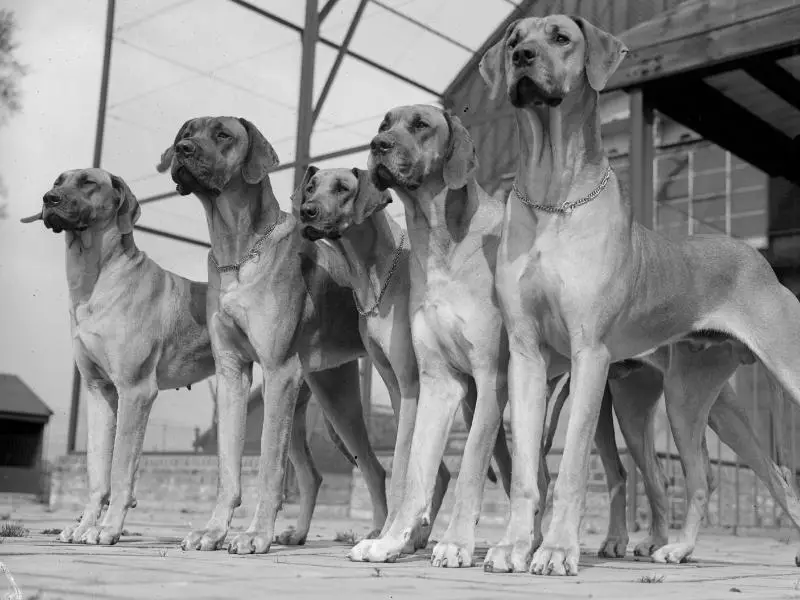
| Common names: | Great Dane, Deutsche dogge, German mastiff, German boarhound |
| Origin: | Germany |
| Breed group: | Working dog |
| Size: | Extra large |
| Height: | 28–32 inches |
| Weight: | 110–175 pounds |
| Colors: | Black, white, blue, merle, harlequin, brindle, chocolate, fawn, silver, and more |
| Coat: | Smooth, short coat |
| Life expectancy: | 7–10 years |
| Temperament: | Dependable, friendly, patient, and affectionate |
| Shedding: | Moderate shedders |
| Barking tendency: | Minimal, when necessary |
| Cost: | $600–$3,000 |
Origin & Purpose
Great Danes, despite their name implying a Danish heritage, originated from Germany where they were used to hunt wild boar. The dogs were referred to as boarhounds and often had their ears clipped to prevent injuries when catching wild animals.
While ancestors of the Great Dane are believed to have been around in Egypt, Babylon, and Tibet, German breeders are responsible for the current, lovable Great Dane breed found in homes today. The dogs’ hunting instincts have been bred out of them, while protective instincts remain.
Life Expectancy
Great Danes, much like other large breeds, have short lifespans of 7–10 years. However, some dogs of the breed are known to live up to 12 years.
These dogs are generally healthy, but there are a few common health issues to look out for which may reduce the dog’s lifespan. Look out for osteosarcoma, heart disease, development issues, and gastric dilatation-volvulus in Great Danes.
Great Dane Appearance
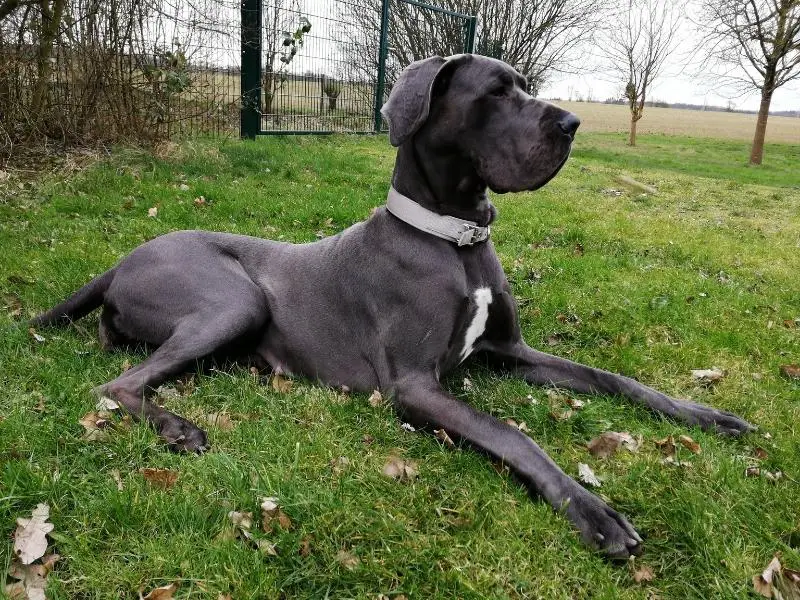
Great Danes are extra-large dogs that grow up to 32 inches tall and weigh up to 175 pounds. They have a sleek, muscular, and athletic build with a large, long, narrow head and a long neck.
These dogs have a smooth, short-haired coat that comes in various colors and color combinations. They have floppy fold-over ears and a medium-length tail that tapers down from a thick base.
European Great Danes have a slightly smaller head and slimmer stature than American Great Danes.
Height and Weight
Great Danes are considered extra-large dogs, with a height at the withers of 28–32 inches, and a weight of 110–175 pounds. Males are 30–32 inches tall and weigh 140–175 pounds at full maturity. Females can grow 28–30 inches tall and weigh 110–140 pounds.
Great Danes usually reach their full height between 18 to 24 months, while gradually reaching their full weight soon after.
Colors
The six most common Great Dane colors are:
- Fawn: A yellow-gold color with a black mask
- Blue: Steel blue, which looks almost gray or black
- Black: A glossy black with no markings
- Brindle: Black and fawn mixed across the body in a striped pattern
- Mantle: Black with white markings across the body
- Harlequin: A white coat with random black markings across the body
These dogs can also come in a range of other colors, which include blue brindle, blue and white, chocolate, merle, harlequin, silver, merlequin, mantle, chocolate and white, or chocolate and brindle. The rarest Great Dane color is white.
Coat
The Great Dane has a smooth, single coat that appears glossy, and has thick, short hair that protects the dog from cold weather.
Despite their short hair, these dogs shed moderately throughout the year, and more heavily during spring shedding season.
Personality and Temperament
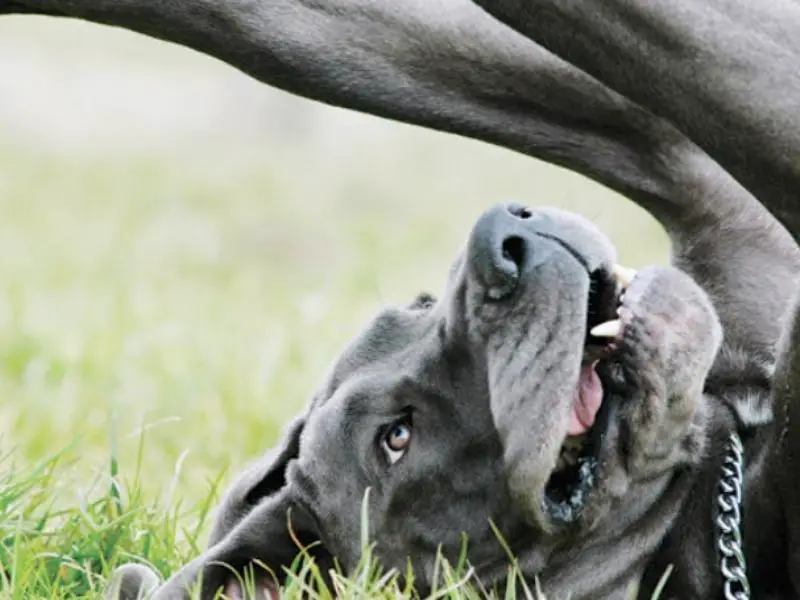
Great Danes are dependable dogs with spirited, courageous, and friendly natures. These dogs are generally not shy or aggressive, according to the American Kennel Club (AKC) temperament guide.
They are gentle with young children and other animals, although the dogs don’t know their size and may accidentally knock over a child or stand on small animals.
Great Danes are playful but not overly active and will suit a moderately active family. These dogs are eager to please, which makes them easy to train. The breed is calm around people but can get aggressive toward strangers if the dog believes it needs to protect its family.
These dogs want to be around family and often try to climb on couches and laps.
Barking
Great Danes are quiet dogs, and don’t bark often unless necessary. The dogs will get used to strangers and won’t bark if taught from a young age.
These dogs have a loud bark, but an almost non-existent bite.
Great Dane Care
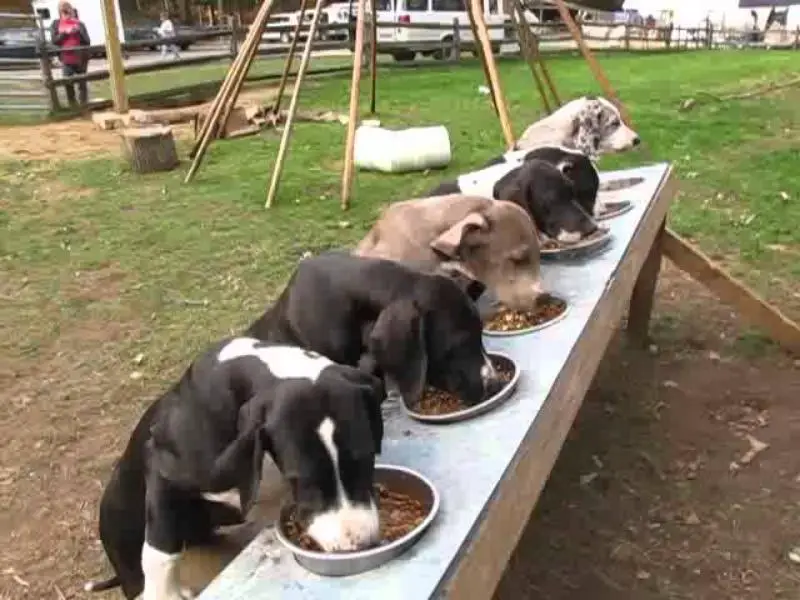
Caring for a Great Dane is easy, despite being expensive due to the dog’s large size. This breed requires more food, more medication, and more grooming than smaller dogs.
Great Danes need two to three meals a day and just as many walks.
Food Needs
The Great Danes require highly nutritious meals because these rapidly growing dogs need a closely monitored diet to help the bones grow according to age and gender. Ask the vet for specific guidelines on how to feed them.
Here is a general guideline on the feeding habits of Great Danes:
- 3–6 months old: Males need 4 to 8 cups, while females need 3 to 6 cups
- 6 months–1 year old: Males need 6 to 10 cups, while females need 5 to 8 cups
- 1–2 years old: Males need 9 to 15 cups, while females need 8 cups
- Adults: Males need 8 to 10 cups, while females need 6 to 8 cups
These dogs should be fed high-quality dog food designed specifically for large-breed dogs, especially as puppies. Feed a puppy three meals each day for the first four months, and then two meals per day from then on.
Grooming Needs
Brush Great Danes weekly, throughout the year, and daily during shedding season in the spring. While it is a moderate shedder, the breed’s large size means that hair in the house adds up quicker than with smaller dogs.
Bathing these dogs is a difficult task and should only be done occasionally or when the dog is visibly dirty.
Brush your dog’s teeth once or twice a week, and trim its nails once a month or when the nails make a ticking sound on the floor.
Exercise Needs
Great Danes are moderately energetic and require a long walk once or twice a day or a play session in a large yard. Give puppies 90 minutes of exercise each day, and adults 30 to 60 minutes per day.
These dogs can be taken on runs only once they’ve turned 18 months old (or in some cases two years old) because the dog’s growing bones aren’t suitable for heavy exercise any earlier.
They are suitable for apartment living as long as they get daily exercise and the space is not so small that the breed bumps into things.
Mental Needs
Great Danes need a moderate amount of mental stimulation to prevent boredom and the potential to become destructive, though these dogs are often quite happy to lounge on a couch all day.
Daily exercise should provide enough mental stimulation, but games including hiding scents or treats, and free shaping sessions can be added to the daily routine.
Common Health Concerns
Great Danes are generally healthy dogs, but the breed is prone to certain large-breed health issues. These dogs have a relatively short life span, which may be reduced even more by the following health conditions:
- Developmental Problems: caused by rapid growth and creates improperly developed bones and muscles. Growing issues in puppies often develop because of an improper diet that includes too much calcium, supplements, or protein. To prevent developmental problems, feed Great Dane puppies food designed specifically for a large breed.
- Gastric Dilatation Volvulus: caused by excess gas that twists the stomach and often occurs in dogs that are fed only one large meal a day, eat or drink too rapidly, and exercise soon after eating. Symptoms of bloat include excessive drooling, retching without any vomit, restlessness, lethargy, or a rapid heart rate. Prevent bloat by your dog more than one meal a day, encourage it to relax after eating, and consider an early gastropexy surgery to prevent the stomach from flipping.
- Hip Dysplasia: caused by the leg bones not fitting into hip joints properly, and can be displayed as lameness in one or both rear legs. Dogs with hip dysplasia shouldn’t be bred because there are no treatment options for this condition, and the issue can be passed to offspring.
- Heart Disease: caused by genetic and lifestyle issues, heart diseases like dilated cardiomyopathy are common in Great Danes. A veterinarian will need to conduct tests to diagnose and treat heart disease based on the type of disease, as well as the dog’s age and health.
- Osteosarcoma: caused by cancer found in the bones of many large breed dogs, and can develop in Great Danes of any age. This aggressive bone cancer causes lameness in the limbs and needs to be diagnosed with X-rays. Treatment for bone cancer includes amputation and chemotherapy.
Training
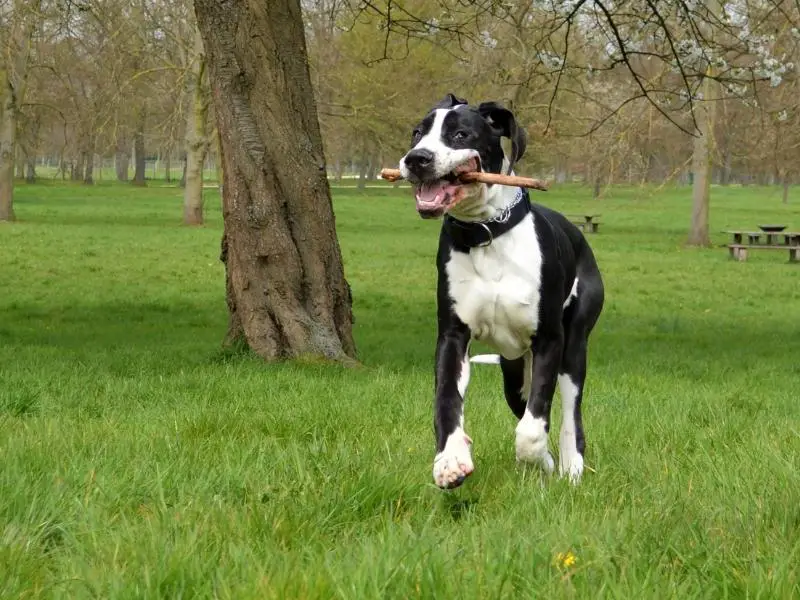
Great Danes are eager to please, which makes them easy to train, as long as training is started from a young age. While the breed is generally easy-going, the absence of early training and socialization can lead to an unmanageable dog.
Some Great Danes are stubborn, although early and consistent obedience training with puppies — that includes plenty of positive reinforcements and affection — trains the dog to be receptive.
Introduce puppies to other animals, children, and people to ensure a well-adjusted adult.
Great Dane Price
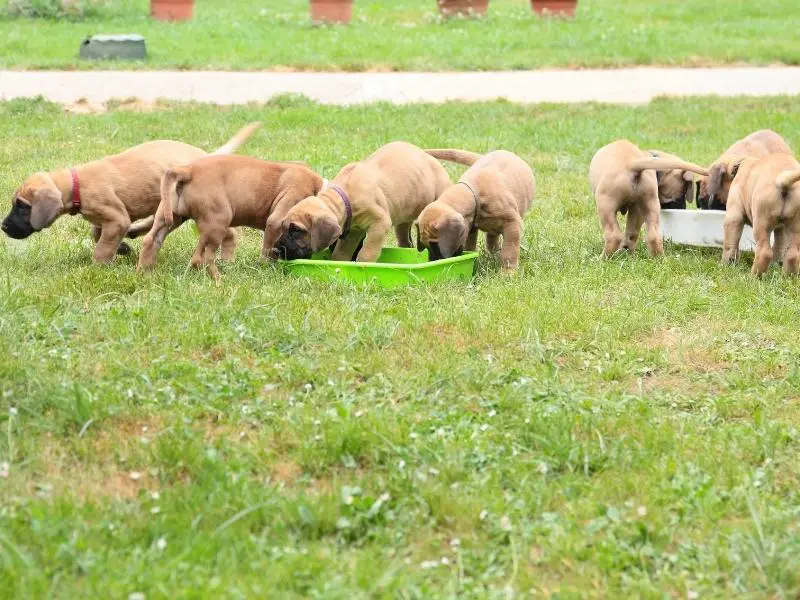
Great Danes are expensive dogs because, like other big dogs, the breed has large dietary and vet needs.
Adopting is cheaper than buying from a breeder, and while the initial costs of the breed are high, the cost will decrease slightly after the first year of care.
How Much Is a Great Dane?
A Great Dane typically costs $600 to $3,000. Buying from a reputable breeder will typically cost $600–$2,000, while dogs with prized lineage can cost up to $3,000.
Adopting from a rescue center can cost $75–$300. Adults are usually cheaper than puppies and cost $100–$400.
How Much Does it Cost to Own a Great Dane?
In the first year of ownership, Great Danes cost roughly $200–$600 per month depending on the medical costs of vaccinations and spaying or neutering. Beginning in the second year of ownership, this dog will cost $75–$200 or more per month.
On average, Great Danes cost $1,500–$2,000 per year.
Is a Great Dane Right for You?
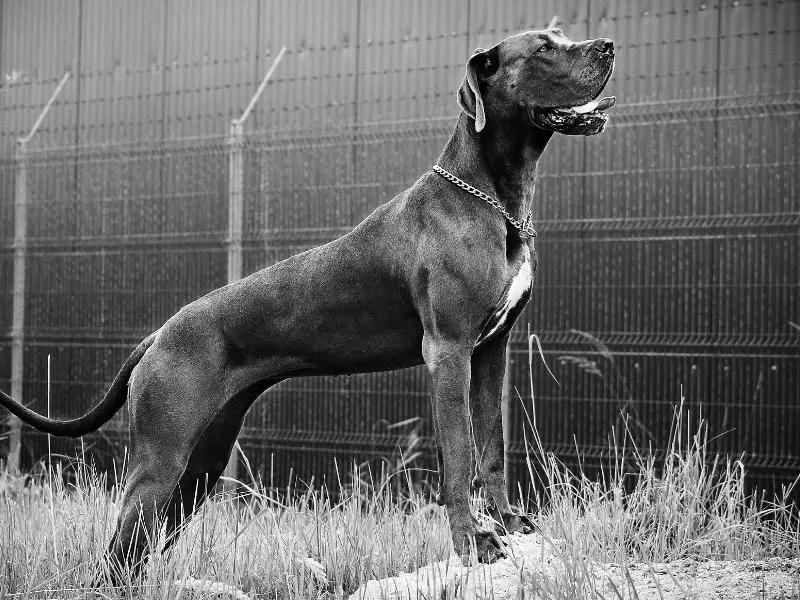
Great Danes are lovable dogs that add affection and humor to a home with their bulky size and caring nature. However, these dogs are not suitable for every home, and certain things should be considered before taking this breed home.
Who Should Get a Great Dane?
Great Danes are gentle and affectionate dogs for single owners or families with children of any age. These dogs are well-suited to moderately active families because the breed can be very relaxed as long as it has an hour of exercise daily.
As long as the dogs are socialized especially with children and other pets from a young age, they will get along well with everyone. Certain dogs may choose to ignore children and pets, but others will cuddle up and play.
Children should be supervised around Great Danes, especially during feeding times, as the dog can become aggressive when eating.
These dogs are suited to any home, as long as the apartment is not too small for the dog to move around — a large yard is preferred. These dogs adore attention and should be a part of a family where someone is home often enough to keep the breed company throughout the day.
Who Should Not Get a Great Dane?
Great Danes are not suitable for families who are timid around large dogs because, even though the dogs are gentle, the breed often doesn’t know its size and can come across as intimidating.
These dogs shed plenty of hair, and are not suitable for people who don’t want pet hair all over the house.
Great Danes are also not suitable for owners who aren’t home often because these dogs need lots of attention and affection.

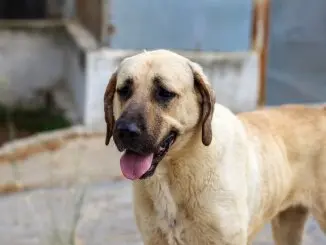
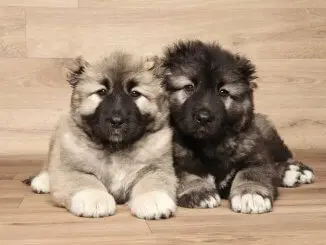
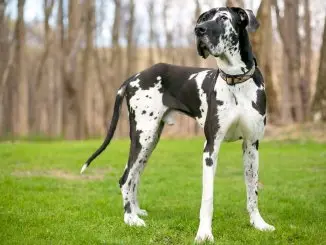
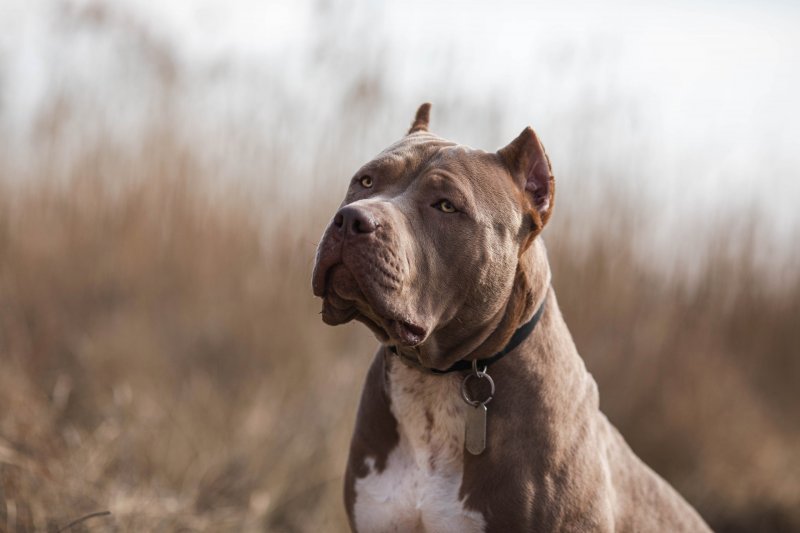
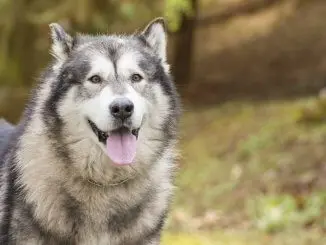
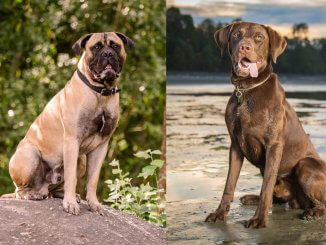
Be the first to comment